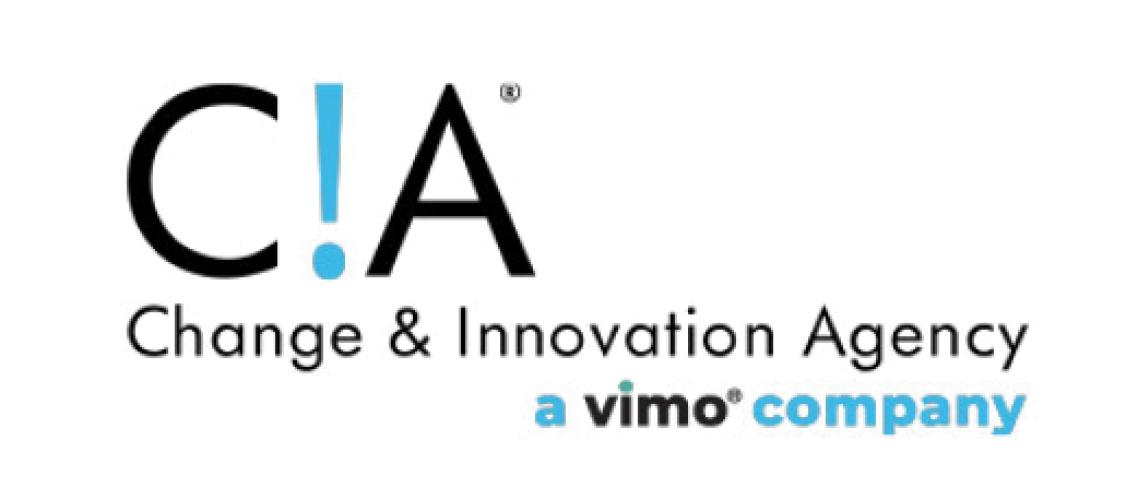NASWA Bulletin - May 4, 2015
In This Issue:
- June 15th Deadline Quickly Approaching to Comment on WIOA NPRMs
- USDOL Seeks Comments on Changes to RJM
- New NVTI Executive Director Appointed
- 2015 FINRA Job Dislocation Brochures available for NASWA members
- Florida Joins 44 Other States Now Live with SIDES
- Announcements, Notices, Advisories, and Reports
June 15th Deadline Quickly Approaching to Comment on WIOA NPRMs
With a June 15th deadline to submit comments on the five Notices of Proposed Rulemaking (NPRMs), for the Workforce Innovation and Opportunity Act (WIOA), both NASWA and the National Governors Associations (NGA) are working together to gather information from States and other organizations to respond to the NPRMs and have provided the following tools to assist with state responses.
- Member Input Tool: To gather comments from states, NGA and NASWA encourage all states to use the Member Input Tool. This will greatly help both Associations aggregate and evaluate input quickly on the NPRMs.
- The tool covers all five NPRMs (click here for a link to the five NPRMs) and also breaks each NPRM into individual sections.
- For each issue in the NPRMs, the tool allows you to describe the issue and make a recommendation or comment. NASWA and NGA will share comments with all States, but State names will not be identified in any final materials without your prior consent. Given the complexity of the NPRMs, we anticipate that your organization may want multiple people providing input.
- Please complete the Member Input Tool by Monday, May 18th.
- High-Level Review: Please click here for the initial analysis prepared jointly by NASWA and NGA staff related to the NPRMs.
- Preamble Questions: While the entire NPRMs are open for comment, the Departments of Labor and Education requested comments on a number of issues. These questions have been assembled into an easy-to-read document and both NGA and NASWA urge states and other stakeholders to respond to these questions. Please click here for the Preamble Questions.
WIOA NPRMs
While there are five NPRMs, we urge a careful review and feedback to the two NPRM’s listed below:
USDOL-Only NPRM: This NPRM, written only by USDOL’s Employment and Training Administration, provides regulations and guidance to implement titles I and III of the Workforce Innovation and Opportunity Act of 2014 (WIOA).
USDOL and Department of Education NPRM: This NPRM, written by USDOL and the Department of Education, and known as a Joint Rule, covers the following areas: Unified and Combined State Plans, Performance Accountability, and the One-Stop System Joint Provisions.
How to Review and Comment: A pre-recorded webcast, developed by USDOL and the Department of Education, designed to assist workforce system stakeholders with the formal process of reviewing and commenting on the NPRMs is available at: https://www.workforce3one.org/view/3001511959610885295/
Overview
WIOA retains much of the structure of Workforce Investment Act, but with critical changes to advance greater coordination and alignment among workforce programs.
Title I-A: Each State will be required to develop a single, unified strategic plan that is applicable to four core workforce development programs. The core programs consist of (1) the adult, dislocated worker, and youth formula programs administered by USDOL under title I of WIOA; (2) the Adult Education and Family Literacy program administered by Department of Education under title II of WIOA; (3) the Wagner-Peyser Act employment services (ES) program administered by USDOL, as amended by title III of WIOA; and (4) the vocational rehabilitation (VR) programs under title I of the Rehabilitation Act administered by the Department of Education, as amended by title IV of WIOA.
- In addition to core programs, WIOA provides States the opportunity to include other key one-stop partner programs such as the Supplemental Nutrition Assistance Program (SNAP), Unemployment Insurance (UI), Temporary Assistance for Needy Families (TANF), and Perkins Career Technical Education in a Combined State Plan. The law also includes a common performance accountability system applicable to all of the core programs.
- The remainder of WIOA Title I authorizes the adult, dislocated worker, and youth formula programs; the State and local workforce development (formerly investment) boards; the designation of regions and local areas; local plans; the one-stop system; national programs, including Job Corps, YouthBuild, Indian and Native American programs, and Migrant and Seasonal Farmworker programs; technical assistance and evaluations; and general administrative provisions currently authorized under Title I of WIA.
Title II: Retains and amends the Adult Education and Family Literacy Program currently authorized under title II of WIA.
Title III: Contains amendments to the Wagner-Peyser Act relating to the ES and Workforce and Labor Market Information System (WLMIS), and requires the Secretary to establish a Workforce Information Advisory Council (WIAC).
Title IV: Contains amendments to the Rehabilitation Act of 1973, which were also included under title IV of WIA; it also requires the Secretary of Labor to establish an Advisory Committee on Increasing Competitive Integrated Employment for Individuals with Disabilities.
Title V: Contains general provisions similar to the provisions applicable under title V of WIA as well as the effective dates and transition provisions.
USDOL Seeks Comments on Changes to RJM
In an effort to reduce the burden on states, NASWA, in partnership with the U.S. Department of Labor (USDOL), established a workgroup to recommend changes to the Resource Justification Model (RJM). The RJM is a data collection instrument intended to gauge the cost of administering the Unemployment Insurance (UI) program and is used by USDOL to distribute UI administrative funds to states.
The workgroup consisted of Members from NASWA’s Administration and Finance and Unemployment Insurance Committees and staff from USDOL, Office of Unemployment Insurance. The workgroup held two in-person meetings in Washington, D.C. in addition to many conference calls.
The RJM had not been reviewed since it was implemented in 2002 and both the states and USDOL wanted to gather experts and see how the process could be modified. For example, the increasing use of technology to administer the UI program has significantly changed over the last 10 years, but these costs have not been updated to reflect the changing UI business model.
As a result of the NASWA-USDOL partnership, three changes were agreed upon and include the following:
- The workgroup decided to reduce the categories of existing Non-Personal Services (NPS) from eight to three:
- The workgroup also decided to discontinue the requirement for states to submit hard copy note books containing the supporting documentation.
- The workgroup decided to add a requirement for states to report separately Personal Services and Personal Benefits for IT expenditures, which did not exist previously.
The USDOL, in April, sought comment on these recommendations and other issues related on the RJM, which was published in the Federal Register. NASWA responded to the Federal Register notice and the Association’s comments can be found here.
New NVTI Executive Director Appointed
NVTI Training Solutions, home of the National Veterans Training Institute (NVTI) recently announced the appointment of Terry Hughes to the position of Executive Director. Mr. Hughes has been with NVTI for almost two years in the position of training manager and begins this new position on May 1, 2015.
Mr. Hughes will replace Vaune Shelbourn, who has been with NVTI for 27 years, and has served as NVTI's Executive Director for nine years. Ms. Shelbourn retires from NVTI on June 1, 2015. NASWA congratulates Terry Hughes as the new NVTI Executive Director and looks forward to working with him in this new capacity. NASWA extends its sincere appreciation for Vaune Shelbourn's leadership at NVTI and her active participation and support of NASWA.
2015 FINRA Job Dislocation Brochures available for NASWA members
NASWA has partnered with the Financial Industry Regulatory Authority (FINRA) to develop a brochure that provides unbiased financial advice for dislocated workers. Through the partnership, FINRA will send copies to every state (who requests the brochure) to distribute to unemployed workers.
Copies of the brochure are free to NASWA members as FINRA is covering all printing and shipping costs. So far, NASWA members in 20 states have ordered more than 195,000 English-version brochures and almost 57,000 Spanish-version brochures. The 2015 English and Spanish version of the brochure, titled "Job Dislocation: Making Smart Financial Choices after a Job Loss,” is located on the NASWA website by clicking here.
The brochure advises dislocated workers how to protect themselves from investment fraud, avoid job scams, and keep their finances on track during a period of unemployment. It also includes information on the workforce system, health care and other resources, and special messaging to UI claimants about registering with the State Workforce Agency.
How to Order Brochures: If your state would like to order the brochure, please click on the Brochure Order Form and respond by email to Josie Link at jlink@naswa.org, with the name(s) and address(es) of the individuals to whom you would like your copies sent. There is no limit per state and you may request to split the delivery in a state to a small number of locations. (Please do not send P.O. Boxes and we would appreciate one response per state.)
Also, please let us know how many copies you would like sent to each location and if you are interested in hard copies of the Spanish version. We anticipate the brochures will be ready for distribution by the end of the month.
States or localities interested in posting the brochure on their website are welcome to do so. If you have any questions regarding your state’s order, please contact Josie Link, NASWA, at 202-434-8029, or jlink@naswa.org.
Florida Joins 44 Other States Now Live with SIDES
Forty-five states are now live with the State Information Data Exchange System (SIDES). As of April 1, 2015, the Florida Department of Economic Opportunity (DEO) became the forty-fifth state to go live with SIDES. Florida is participating in two SIDES exchanges: Separation Information and Earnings Verification. Five more states are planning to go live by the end of March 2016.
SIDES is a web-based transmission system of electronic UI information; a data exchange system between UI agencies, employers, and third party administrators (TPAs).
SIDES has three exchange formats; separation information, earnings verifications and Monetary and Potential Charges, available to help improve information requests and responses between states and employers or their TPAs. Through these exchange formats, SIDES helps reduce UI payments to ineligible claimants, yields administrative cost savings to both state agencies, employers, and taxpayers; and promotes more timely benefit determinations. By providing additional start-up funding through supplemental budget requests, USDOL has encouraged states to join the SIDES consortium.
For more information on SIDES, please visit http://info.uisides.org or contact SIDES Director Jerry Pectol at (918) 213-0029 or Jerry.Pectol@itsc.org.
Announcements, Notices, Advisories, and Reports
Announcements:
Montana Seeking Creative Individual to Lead Workforce Services Division
The Montana Department of Labor and Industry is looking for an energetic, creative leader to oversee their Workforce Services Division. Individuals looking for an opportunity to manage change, empower staff, and rethink the way government provides services to the public, Montana would like your application!
The Montana Department of Labor and Industry mission is to promote and protect the wellbeing of Montana’s workers, employers and citizens; and to uphold their rights and responsibilities. The core values of the Department are customer focus, individual responsibility, individual growth, ethics in the workplace, and continuous improvement.. The ideal candidate embraces and demonstrates these values. For more information, applicants should go to the following link for more information: https://mtstatejobs.taleo.net/careersection/200/jobdetail.ftl?job=15140988.
WIA Incentive Awards Made to Three States
The Employment and Training Administration has published the Notice of Incentive Funding Based on Program Year 2013 in the May 1 Federal Register. Three States – Minnesota, North Dakota and Rhode Island – are eligible for $9.0 million in incentive awards based on WIA Title 1B and WIA Title II (AEFLA). These funds were contributed by the Department of Education from appropriations for the Adult Education and Family Literacy Act at WIA title II (AEFLA). They are available for the eligible States to use through June 30, 2017 to support innovative workforce development and education activities
On-the-Job Training Finder Tool
Glassdoor has launched a new interactive job search mapping tool called On-the-Job Training Finder. The tool is designed to make it easier for workers to find on-the-job training career opportunities, such as apprenticeships and trainee positions. This tool makes it easy to simultaneously search apprenticeships, including many of those registered through the Department of Labor, in addition to non-registered apprenticeships and trainee positions, across a variety of sectors.
Sector Partnerships Grants Available
The U.S. Department of Labor is making $150 million available through the new Sector Partnerships National Emergency Grant programs to help states develop innovative employment and training services that focus on enhanced regional and industry-specific collaborations. The effort is designed to support proven strategies to help people rejoin the job market and add fuel to the economy. Grants will range from $500,000 to $7 million and all states, territories and federally-recognized tribes are eligible to apply for funding. Applications must be received by May 29 to be considered. More information on applying for funding is available in Training and Employment Guidance Letter 31-14.
ETA Notices and Advisories:
May 01, 2015: The Employment and Training Administration (ETA) released TRAINING AND EMPLOYMENT GUIDANCE LETTER No. 20-01, Change 13 to provide the procedures states should follow to apply for WIA Section 503 Incentive Grants and reminds states of the authorized use of these grant funds.
April 30, 2015: ETA released TRAINING AND EMPLOYMENT NOTICE NO. 31-14 to inform state and local workforce system leaders and other stakeholders comprising the nation's employment and training system and One Stop Centers of the Employment and Training Administration's (ETA) plans to issue operating guidance on the implementation of WIOA and to continue to provide technical assistance.
April 29, 2015: ETA released TRAINING AND EMPLOYMENT NOTICE NO. 30-14 to announce the release and availability of the Comparison of State Unemployment Insurance Laws 2015.
April 29, 2015: ETA released TRAINING AND EMPLOYMENT GUIDANCE LETTER No. 31-14 to announce the availability of up to $150 million for Sector Partnership National Emergency Grants (SP NEGs).
April 27, 2015: ETA released TRAINING AND EMPLOYMENT GUIDANCE LETTER No. 29-14 to provide States and outlying areas with WIOA Title I Adult, Dislocated Worker and Youth Activities program allotments for PY 2015; final allotments for PY 2015 for the Wagner-Peyser ES Program, as required by section 6(b)(5) of the Wagner-Peyser Act, as amended; and the Workforce Information Grants to States allotments for PY 2015.
April 27, 2015: ETA released TRAINING AND EMPLOYMENT GUIDANCE LETTER NO. 13-13, Change 1 to inform the State Workforce Agencies of the extension of the approval period for the AOPs, the designation of MSFW states, and the PY 2014 designation of Significant MSFW and Bilingual Local Offices through June 30, 2016. This means that current AOPs, designated MSFW states, and Significant MSFW and Bilingual Local Offices will remain the same through June 30, 2016. States do not need to submit updated AOPs.
Recent Publications:
States Use Data Systems to Track Workforce Shortages***
The Education Commission of the States released an information brief examining state trends in workforce development law. The brief looked at state laws from 2012 to 2014 that focused on cooperation between postsecondary institutions and employers to address workforce needs in specified labor markets. The researchers found that the laws included the use of data systems to track workforce shortages and degree or certification completion, in addition to targeted programs that focused on training a specific population or developing a training program in a high-demand field.
IMF: ONE-THIRD OF LABOR FORCE PARTICIPATION DECLINE -- REVERSIBLE:
Between one- third and one-fourth of the Great Recession-induced decline in labor force participation in the U.S. is reversible, according to a new paper from the International Monetary Fund. Even so, the paper said, the labor force participation rate will continue to decline because of demographics. According to the IMF, the aging population accounted for about half the labor force participation rate decline between 2007 and 2013, while cyclical factors (the 2007-9 recession and the weak recovery that followed) accounted for between 33 and 43 percent. Increased college enrollment and fewer students working also played a role. http://goo.gl/LJEDmp
For questions or comments, please contact NASWA Bulletin Editor Marc Katz at mkatz@naswa.org.

































